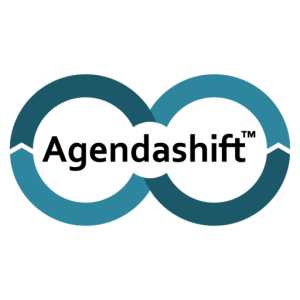This is me being helpfully subversive (if that’s not already a thing, it should be): [1]
1. It’s helpful to see frameworks as mere exemplars of patterns
The ‘mere’ will rub a few people up the wrong way, but it’s true! If for example you can see Scrum as iterated self-organisation around goals [2], you’re capable of seeing the same not only for SAFe, but also for OKR, the subject of my previous post [3]. Could a Scrum or SAFe practitioner learn from OKR (or vice versa)? You bet!
2. How they combine is often more interesting than the patterns themselves
See the patterns and you see not only the similarities but the complementarity. Scrum and Kanban for example are a great combination [4]. But don’t stop there! In this same spirit of integration rather than differentiation and tribalism, Chapter 3 of Right to Left [5] covers some of the key landmarks of the Lean-Agile landscape as patterns: Scrum, Kanban, XP, DevOps, User Story Mapping, Jobs to be Done, BDD, Service Design Thinking, Theory of Constraints, and Lean Startup.
No, I’m not trying to define some huge new framework that solves every problem. That would be horrific! Just helping you make sense of what’s out there.
3. How they’re introduced matters way more than the framework itself
It’s well known that many if not most change initiatives fail. Why so many in the change industry and with it much of the Agile industry still cling to the linear, implementation-focussed, and resistance-obsessed change management frameworks of the past beats me. It’s embarrassing!
It’s why Agendashift [6, 7] exists, and with it other modern engagement models such as those mentioned in [8]. They too are exemplars of patterns and are simply begging to be combined! Towards that purpose and since that post was written, the Open Leadership Network [9] has come into being, and I’m proud to be an advisory board member. For all of us, this is not just a provocative statement, it’s a primary motivation that’s powerful enough to encourage us to collaborate. We’re walking the walk here!
If you remember me waxing lyrical about the network’s launch event, the Open Leadership Symposium in Boston last May, you’ll be glad to know that there’s another one in Berlin in November [10]. See you there!
[1] 3 subversive contentions about frameworks in 1 tweet (twitter.com)
[2] ‘Right to Left’ works for Scrum too (July 2018)
[3] There will be caveats: Warming cautiously to OKR
[4] Scrum and Kanban revisited (August 2017)
[5] Right to Left: The digital leader’s guide to Lean and Agile (agendashift.com)
[6] Agendashift: Outcome-oriented change and continuous transformation (agendashift.com)
[7] Agendashift home (agendashift.com)
[8] Engagement: more than a two-way street (September 2018)
[9] Open Leadership Network (openleadershipnetwork.com)
[10] Open Leadership Symposium Berlin 2019 (openleadershipnetwork.com)
Upcoming Agendashift workshops – Athens, London, Istanbul, Berlin, and online
- 17-18 September, Athens, Greece (myself and Nikos Batsios):
2-day Advanced Agendashift workshop: Coaching and Leading Continuous Transformation - 3-4 October, London, UK:
2-day Advanced Agendashift workshop: Coaching and Leading Continuous Transformation - 15-16 October, online, two 2-hour sessions, mornings UK time:
Agendashift online: Learning the language of outcomes - 26th October (changed from the 23rd), Istanbul, Turkey:
1-day Core Agendashift workshop: Facilitating outcome-oriented change - 13-14 November, Berlin, Germany:
2-day Advanced Agendashift workshop: Coaching and Leading Continuous Transformation - 5-6 December, online, two 2-hour sessions, afternoons UK time:
Agendashift online: Learning the language of outcomes
Leading change in the 21st century? You need a 21st century engagement model:
Blog: Monthly roundups | Classic posts
Links: Subscribe| Home | Partners | Books |Resources | Events | Contact | Mike
Community: Slack | LinkedIn group | Twitter


Nice one Mike, have referenced this in my latest blog https://medium.com/@chrisjameslennon/of-patterns-and-frameworks-8438e65f53db
LikeLiked by 1 person